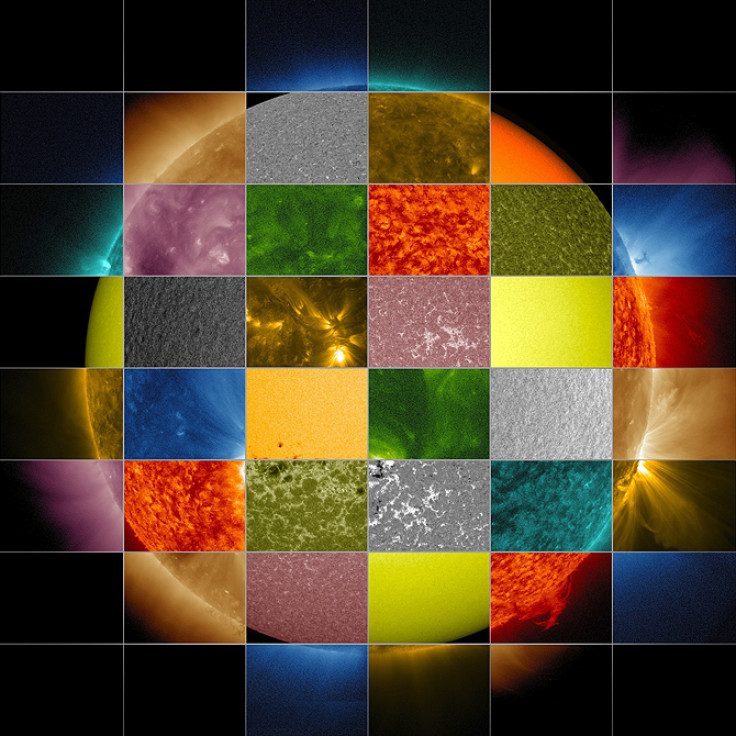Nasa Reveals Rainbow of Sunlight's Colours Invisible to Naked Eye [PHOTOS + VIDEO]

Nasa has released a video of the sun that presents a spectacle of light in all colours emitted by the star.
The video shows a wide range of wavelengths which are invisible to the naked eye and can be viewed only by telescope.
"The sun, in fact, emits light in all colours, but since yellow is the brightest wavelength from the sun, that is the colour we see with our naked eye," Nasa scientists said in a statement.
The video is based on data from Nasa's Solar Dynamics Observatory (SDO), which produces the colourful lights after converting the wavelengths into an image humans can see.
"As the colours sweep around the sun in the movie, viewers should note how different the same area of the sun appears. This happens because each wavelength of light represents solar material at specific temperatures," Nasa said.
Each wavelength of the light highlights different components of the sun's surface and atmosphere, according to scientists.

"Yellow light of 5800 Angstroms, for example, generally emanates from material of about 10,000 degrees F (5700 degrees C), which represents the surface of the sun. Extreme ultraviolet light of 94 Angstroms, which is typically colorized in green in SDO images, comes from atoms that are about 11 million degrees F (6,300,000 degrees C) and is a good wavelength for looking at solar flares, which can reach such high temperatures," Nasa explained.
The video in total represents the full picture of the constantly changing and varying sun. It helps scientists track the movement of heat and particles through the sun's atmosphere.
Watch the video here:
© Copyright IBTimes 2024. All rights reserved.






